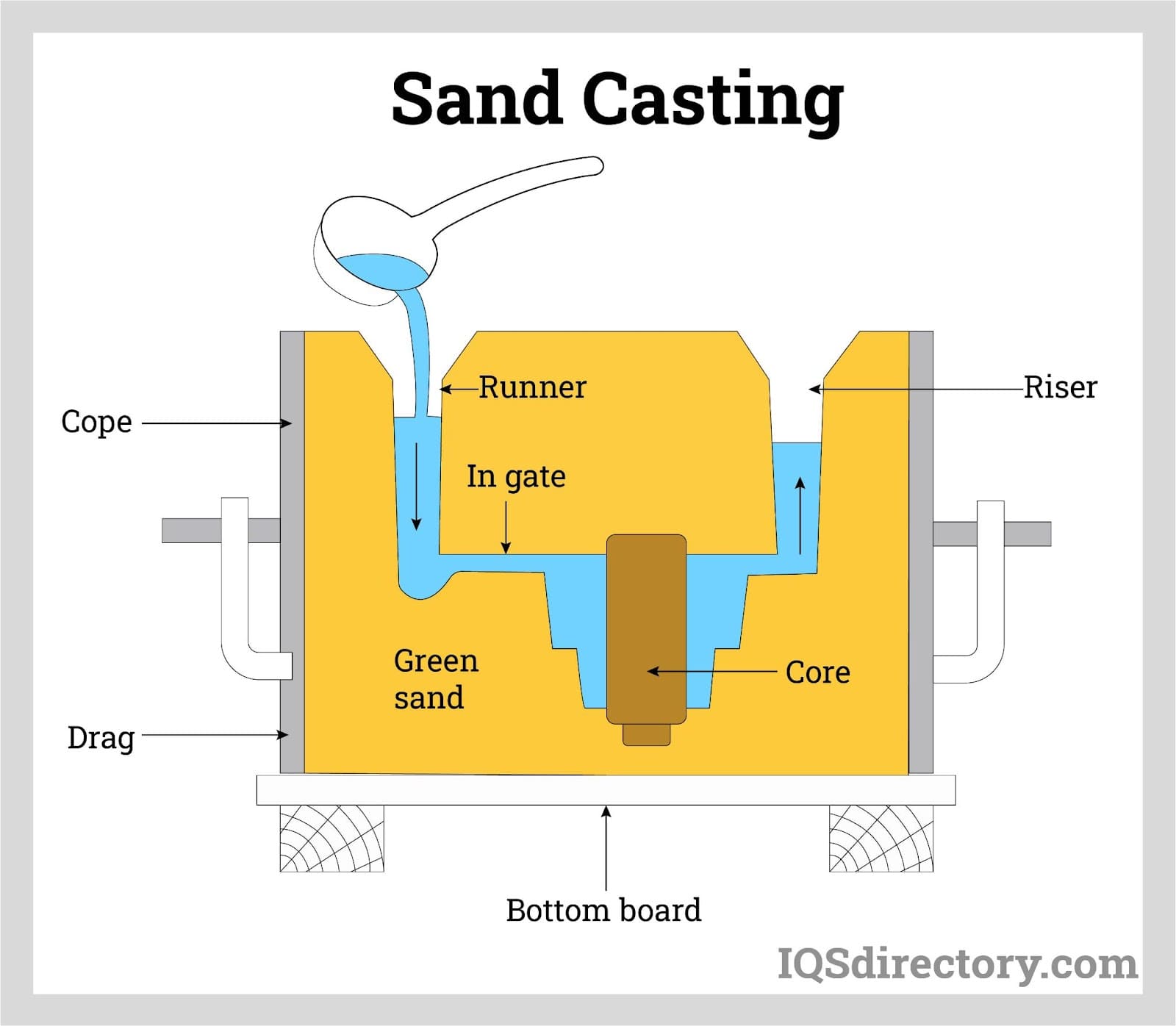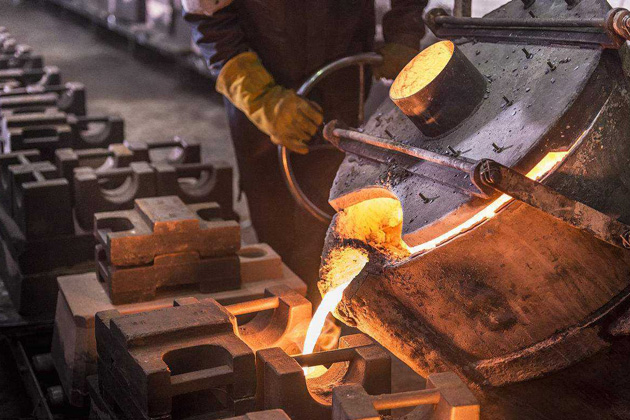Just How Aluminum Foundry Adds To Advancements in Aerospace Design
Aluminum foundries are integral to improvements in aerospace engineering. They generate lightweight, high-strength parts that are essential for modern-day aircraft. Through sophisticated spreading techniques, these factories develop complicated geometries that enhance structural stability. In addition, the advancement of superior Aluminum alloys supports the sector's concentrate on gas effectiveness and sustainability. Nevertheless, obstacles remain in the manufacturing procedure. Understanding these variables reveals the extensive effect of Aluminum on aeronautics's future.
The Importance of Lightweight Products in Aerospace Design
As the aerospace industry continues to evolve, the significance of light-weight products becomes progressively evident. The demand for effectiveness and sustainability drives designers to prioritize making use of materials that minimize overall weight without compromising structural integrity. Light-weight products, especially Aluminum, play an essential role in improving fuel effectiveness, enhancing payload capacity, and enhancing the general performance of aircraft.
The combination of these products permits for cutting-edge layouts, making it possible for suppliers to develop even more aerodynamic shapes that can stand up to extreme conditions. The reduction in weight not just decreases functional prices but also adds to a reduced environmental footprint, aligning with international efforts toward sustainability in aeronautics.
Advanced Spreading Techniques in Aluminum Foundries
Advanced spreading techniques in Aluminum foundries play an important function in aerospace engineering by making it possible for the manufacturing of light-weight and accurate parts. Innovations in mold and mildew style and accuracy casting processes are important in accomplishing optimal efficiency and architectural honesty. Furthermore, the advancement of light-weight alloys boosts the general performance and efficiency of aerospace applications.
Cutting-edge Mold Style
Ingenious mold layout plays a necessary function in the performance and effectiveness of Aluminum foundries, specifically within the aerospace market. By leveraging sophisticated materials and strategies, contemporary molds can be engineered to endure heats and pressures, making sure peak efficiency throughout the spreading procedure. These layouts commonly integrate complicated geometries that enable for the manufacturing of light-weight yet structurally audio elements, important for aerospace applications. Furthermore, the use of computer-aided layout (CAD) software application facilitates precise modeling, allowing factories to refine and imitate mold designs prior to physical production starts. This not just enhances the quality of cast parts yet additionally minimizes waste and preparation, resulting in substantial price savings. Overall, ingenious mold and mildew layout is a cornerstone of development in Aluminum Foundry innovation for aerospace engineering.
Accuracy Casting Procedures
The effectiveness of innovative mold styles effortlessly integrates with accuracy spreading processes, which are vital for generating top notch Aluminum parts in aerospace design. These processes, including sand casting, pass away casting, and financial investment spreading, ensure the production of complicated geometries with tight tolerances. Advanced methods like vacuum spreading and stress die casting boost the stability and surface area coating of the end products. Precision spreading reduces material waste while making the most of the mechanical residential properties of Aluminum, critical for aerospace applications. Additionally, using real-time monitoring and advanced simulation tools throughout the casting procedure enables prompt adjustments, causing enhanced quality assurance. Jointly, these accuracy casting procedures setting Aluminum foundries at the center of aerospace technology, supporting the industry's need for dependability and performance.
Lightweight Alloy Advancement
As aerospace engineers seek to enhance gas effectiveness and performance, light-weight alloy development comes to be an essential emphasis in Aluminum foundries. These foundries utilize advanced casting strategies to produce alloys that give premium strength-to-weight ratios. Innovations in alloy make-up, including the consolidation of elements like lithium and magnesium, make it possible for the production of products that withstand severe conditions while lowering overall airplane weight. Techniques such as die spreading and financial investment spreading facilitate the precision production of complicated shapes, which are critical for aerospace applications. Furthermore, recurring study aims to maximize these alloys for improved mechanical residential properties and raised longevity. By focusing on lightweight alloy advancement, Aluminum factories significantly add to the advancement of aerospace engineering, paving the method for a lot more sustainable and effective airplane styles.

Enhancing Architectural Integrity With Aluminum Components
Aluminum components use considerable benefits in enhancing architectural honesty within aerospace engineering. Their lightweight nature adds to overall efficiency while maintaining toughness, which is essential for airplane performance. Additionally, the anxiety resistance buildings of Aluminum assistance ensure the sturdiness and dependability of aerospace frameworks under different operational problems.
Light-weight Material Conveniences
While typical materials commonly jeopardize weight for stamina, using Aluminum parts in aerospace design offers substantial advantages in architectural honesty. Aluminum's lightweight nature adds to total design performance, enabling more structured aircraft that eat less gas, thereby boosting sustainability. The product's exceptional strength-to-weight ratio guarantees that parts keep toughness without adding unneeded mass. This quality cultivates improved performance and agility in trip, as well as enhanced haul capabilities. In addition, Aluminum's resistance to corrosion extends the life expectancy of aerospace frameworks, decreasing upkeep costs and improving safety and security. As producers increasingly take on Aluminum alloys, the aerospace industry experiences a transformative change in the direction of a lot more reliable and reliable design options that focus on both efficiency and environmental duty.
Stress Resistance Properties
Although numerous materials have one-of-a-kind residential properties, Aluminum's extraordinary stress resistance sticks out as a vital factor in improving the architectural integrity of aerospace components. This resistance plays a crucial function in making certain that aircraft can endure different operational Our site stresses, including fatigue, influence, and ecological conditions. Aluminum alloys, especially crafted for aerospace applications, display high tensile stamina while maintaining light-weight features, enabling designers to make extra reliable structures - Aluminum Foundry. Furthermore, the ability of Aluminum to endure cyclic loading without substantial contortion contributes to the longevity and integrity of aerospace elements. As improvements continue in Aluminum Foundry techniques, the growth of stress-resistant Aluminum elements promises more renovations in performance, safety and security, and performance throughout the aerospace market, solidifying Aluminum's duty as a recommended product in contemporary design
Fuel Effectiveness Improvements Driven by Aluminum Innovations
As the aerospace industry looks for to enhance fuel performance, ingenious usages of Aluminum have actually become a vital remedy. Aluminum's lightweight nature especially lowers aircraft weight, permitting lower gas consumption throughout trip. This reduction in weight is essential, as even little decreases can cause significant enhancements in total gas economic situation.
Advanced Aluminum alloys, developed for boosted stamina and longevity, make it possible for makers to create elements that keep architectural honesty while reducing mass - Aluminum Foundry. In addition, the integration of Aluminum in airframes and engine elements promotes improved the rules of aerodynamics, contributing to lowered drag and enhanced effectiveness
The adoption of Aluminum in aerospace not only fulfills the need for fuel-efficient style however additionally straightens with regulatory pressures for lower discharges. As these developments remain to develop, they play a substantial role in establishing brand-new standards for fuel efficiency, ensuring that the aerospace market can meet growing financial and ecological obstacles.

The Role of Aluminum in Sustainable Air Travel Practices
The boosting focus on sustainable air travel methods has actually positioned Aluminum as a necessary product in the pursuit for greener airplane style. Recognized for its light-weight buildings, Aluminum substantially decreases aircraft weight, bring about reduced fuel consumption and discharges. Its recyclability further boosts its sustainability account, as Aluminum can be reused indefinitely without loss of quality. This characteristic supports a round economic climate within the aviation sector, decreasing waste and resource depletion.
Innovations in Aluminum alloys have enhanced their strength and deterioration resistance, enabling for longer service life and reduced upkeep demands. These additional reading innovations help with the advancement of extra effective aircraft frameworks, adding to overall sustainability efforts. In addition, Aluminum's thermal conductivity plays a crucial function in energy-efficient designs, boosting systems such as warmth exchangers. Collectively, these qualities underscore Aluminum's essential role in progressing lasting air travel, aligning with worldwide initiatives focused on lowering the environmental effect of air traveling.
Challenges Dealt With by Aluminum Foundries in Aerospace Production
While Aluminum shops play a necessary role in aerospace manufacturing, they deal with substantial challenges that can impact production performance and top quality. One major challenge is the rigid high quality control criteria required in the aerospace market. Any kind of flaw can jeopardize safety and security and efficiency, demanding rigorous assessment processes that expand production timelines. Additionally, foundries commonly emulate rising and fall raw material expenses, which can influence rates and productivity. The intricacy of Aluminum alloys made use of in aerospace applications more makes complex the production procedure, as exact solutions are crucial for achieving desired mechanical residential properties. Competent labor scarcities prevent the capacity to preserve premium production levels. Ecological guidelines impose restrictions on discharges and waste management, requiring shops to invest in lasting techniques, which can be cost-prohibitive. These factors collectively develop a landscape where Aluminum factories need to continuously adjust to fulfill the evolving needs of aerospace manufacturing while ensuring safety and security and compliance.
Future Trends in Aluminum Applications for Aerospace Design
With innovations in innovation and increasing needs for efficiency, the future of Aluminum applications in aerospace design is poised for considerable improvement. The assimilation of ingenious Aluminum alloys and compounds is expected to improve strength-to-weight proportions, leading to even more fuel-efficient airplane layouts. In enhancement, developments in additive production techniques will certainly permit the production of intricate Aluminum structures that were formerly difficult, optimizing check it out performance and lowering waste.

Sustainable methods will certainly play an important function, with a growing emphasis on recycling Aluminum to lessen environmental effect. The aerospace market is likely to embrace smarter manufacturing processes, such as automation and man-made knowledge, making certain better and precision in Aluminum components. Partnerships in between Aluminum foundries and aerospace companies will certainly foster research and growth, leading the way for new applications that meet the rigorous needs of contemporary aerospace engineering. In general, the future looks promising for Aluminum's duty in forming the skies
Often Asked Questions
What Are the Environmental Impacts of Aluminum Manufacturing in Aerospace?
The ecological effects of Aluminum production in aerospace consist of considerable power usage, greenhouse gas discharges, and habitat disruption. In addition, mining procedures can cause soil degradation and water contamination, elevating worries regarding sustainability and ecological equilibrium.
Exactly How Does Aluminum Compare to Various Other Products in Aerospace Applications?
Aluminum provides an unique mix of light-weight residential or commercial properties, corrosion resistance, and cost-effectiveness contrasted to other products. Its high strength-to-weight proportion makes it particularly advantageous for aerospace applications, boosting fuel performance and overall efficiency in aircraft layout.
What Certifications Do Aluminum Foundry Workers Requirement for Aerospace Projects?
Aluminum Foundry employees need specialized training in metallurgy and spreading techniques, together with knowledge of aerospace market criteria. Qualifications in quality assurance and safety and security protocols are additionally vital to guarantee compliance with rigorous aerospace project needs.
Are There Any Type Of Safety And Security Worry About Making Use Of Aluminum in Aerospace Engineering?
Safety problems regarding Aluminum in aerospace design consist of susceptibility to anxiety, deterioration, and exhaustion cracks. Appropriate therapy and alloy option are important to mitigate these risks, making sure architectural honesty and overall safety in aerospace applications.
Exactly How Does Aluminum Recycling Advantage the Aerospace Sector?
Aluminum reusing considerably profits the aerospace sector by minimizing product prices, reducing environmental impact, and conserving energy. This sustainable method enhances the industry's performance while advertising the usage of light-weight, high-performance elements in aircraft manufacturing.
Advanced casting strategies in Aluminum foundries play an important duty in aerospace engineering by making it possible for the manufacturing of specific and light-weight elements. Ingenious mold style plays a vital role in the efficiency and performance of Aluminum shops, specifically within the aerospace market. As aerospace engineers seek to enhance gas effectiveness and efficiency, light-weight alloy development comes to be a vital focus in Aluminum factories. Aluminum alloys, particularly engineered for aerospace applications, show high tensile stamina while maintaining light-weight attributes, enabling engineers to design extra effective structures. Cooperations between Aluminum foundries and aerospace firms will promote research and advancement, leading the means for new applications that fulfill the rigorous demands of modern aerospace engineering.